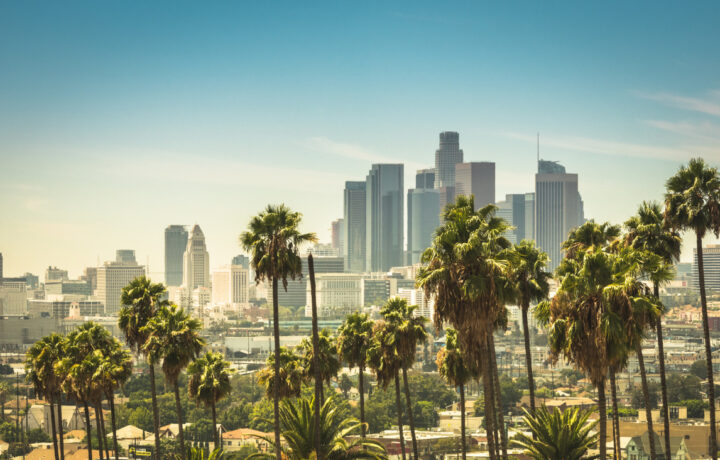The Marine Corps Hymn chronicles its actions during the Mexican-American War in the 1840s and its first foreign deployment in North Africa decades earlier. The hymn doesn’t mention its role in domestic affairs, but this week’s deployment of 700 Marines to Los Angeles won’t be the first time the Corps has been employed on U.S. soil.
This week, the Trump administration announced that 700 troops based at the Marine Corps Air Ground Combat Center in California were mobilized to respond to protests in Los Angeles, joining thousands of U.S. National Guard members who had been previously activated over the weekend.
“U.S. Northern Command has activated the Marine infantry battalion that was placed in an alert status over the weekend. Approximately 700 Marines with 2nd Battalion, 7th Marines, 1st Marine Division will seamlessly integrate with the Title 10 forces under Task Force 51 who are protecting federal personnel and federal property in the greater Los Angeles area,” U.S. Northern Command (USNORTHCOM) announced on Monday.
Show of Force
As of Tuesday, there were 2,100 soldiers from the 79th Infantry Brigade Combat Team, a California National Guard unit in Title 10 status, in the greater Los Angeles Area, including in Los Angeles, Paramount, and Compton.
While the U.S. military personnel will be armed with their standard service weapons, the Associated Press reported, the troops will not be carrying tear gas. They will also be issued anti-riot equipment, which includes their standard combat helmet, along with shields and gas masks.
A U.S. official told the Associated Press that Marines are being issued cards explaining how to respond to the fast-changing situation. This differs from the standard rules of engagement that determine how warfighters can respond to deadly threats overseas. According to use-of-force draft documents viewed by the AP, “Marines are directed to deescalate a situation whenever possible but also are authorized to act in self-defense,” but warning shots are prohibited.
The deployed Marines were reportedly trained in “de-escalation, crowd control and standing rules for the use of force,” according to NORTHCOM, and will be authorized to detain civilians if troops are under assault or to prevent harm to federal personnel and property.
The troops have not been authorized or directed to conduct arrests, searches, or seizures, or to undertake other law enforcement activities.
A Pentagon official told lawmakers that the cost of deploying the National Guard and U.S. Marines was estimated to be around $134 million.
Not the First Time Marines Deployed Domestically
This wouldn’t be the first time military personnel, including Marines, have been deployed to Los Angeles. President George H.W. Bush authorized the use of the military in response to the Los Angeles riots in 1992 following the acquittal of the police officers who were videotaped beating motorist Rodney King. Bush federalized the National Guard and activated soldiers with the U.S. Army’s 7th Infantry Division and Marines from the 1st Marine Division.
There are notable differences.
California Governor Pete Wilson, along with Los Angeles Mayor Tom Bradley, requested federal assistance.
Governor Gavin Newsom didn’t request the National Guard or Marines to be deployed. L.A. Mayor Karen Bass has also downplayed the extent of the demonstrations, which have been protesting efforts by Immigration and Customs Enforcement (ICE) agents to arrest undocumented residents in the city.
President Bush invoked the Insurrection Act, whereas President Trump has not.
This marks the first time that a U.S. president has deployed the military without a governor’s consent in six decades. Los Angeles Police Chief Jim McDonnell has called for “open and continuous lines of communication” between the various agencies ahead of the deployment to “prevent confusion, avoid escalation, and ensure a coordinated, lawful, and orderly response during this critical time.”
Other Deployments
United States Marines have also been deployed in response to natural disasters and other emergencies. That included the 9/11 terrorist attacks in New York City and Hurricane Katrina in 2005.
Before the 1992 riots, the Insurrection Act had been invoked by Presidents Dwight D. Eisenhower, John F. Kennedy, and Lyndon B. Johnson to enforce federal court orders desegregating schools and other institutions in the 1960s.




